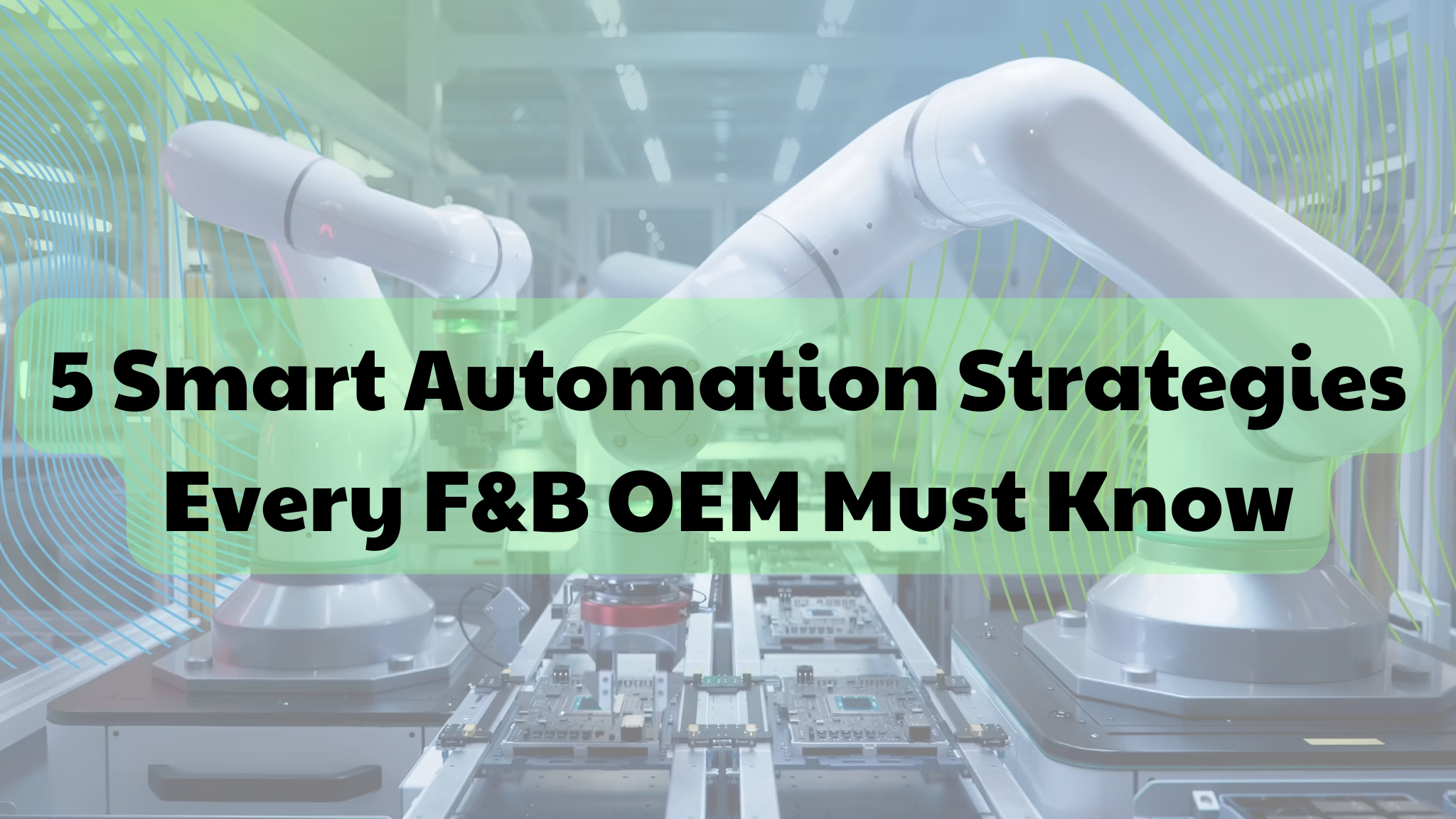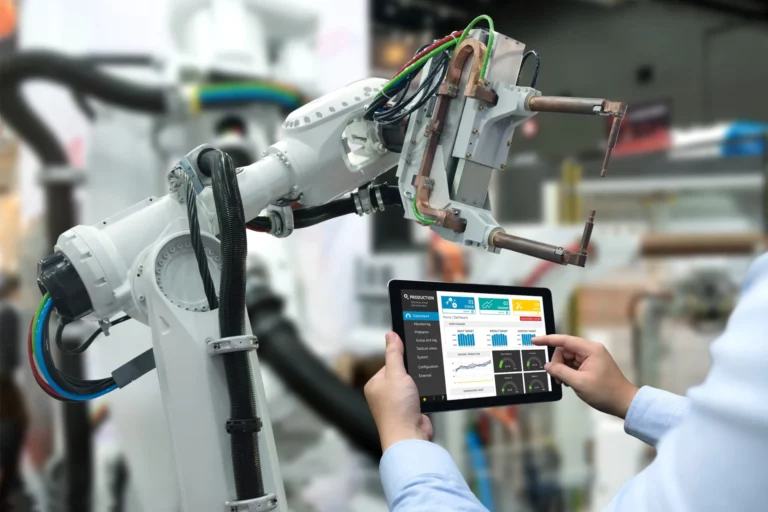5 Smart Automation Strategies Every F&B OEM Must Know

Discover 5 essential strategies for applying smart automation in F&B manufacturing. Learn how OEM producers can stay competitive in 2025 and beyond.
Introduction: The Digital Shift in F&B Manufacturing
In today’s competitive and fast-changing landscape, smart automation in F&B manufacturing has emerged as a mission-critical strategy. From global compliance to faster order fulfillment, the role of smart automation in F&B manufacturing is expanding across the value chain. Beverage OEMs and private label producers are under pressure to modernize operations or risk falling behind.
According to a 2024 report from Gulfood Manufacturing, 70% of F&B manufacturers identify productivity as the top benefit of automation, while 48% are allocating nearly half of their capital budgets to automation initiatives. Moreover, 78% are already leveraging automation to address ongoing labor shortages.
Here are five automation strategies every food and beverage OEM should implement to stay competitive in 2025.
1. Adopt Collaborative Robotics (Cobots) for Scalable Production
Traditional manufacturing relied heavily on human labor for repetitive tasks. However, smart automation in F&B manufacturing now leverages collaborative robots (cobots) to handle functions such as:
Bottle filling and sealing
Palletizing and sorting
Label placement and quality checks
Cobots are designed to work safely alongside human operators, requiring minimal programming. By integrating cobots, beverage OEMs can:
Reduce labor costs
Improve throughput
Maintain consistent product quality
In Southeast Asia, many mid-sized factories are beginning to deploy cobots as a cost-effective way to scale exports without drastically expanding the workforce.

2. Enable Real-Time Monitoring with IoT Sensors
In a modern factory, real-time data drives every decision. Smart automation in F&B manufacturing thrives on real-time insights collected through IoT-enabled sensors. These sensors gather critical information about:
Liquid levels and flow rates
Temperature and humidity control
Machine status and performance
This data can be viewed on centralized dashboards, allowing production managers to quickly identify anomalies and intervene before issues escalate.
In the context of OEM beverage manufacturing, this ensures consistent product quality across batches, which is crucial for satisfying overseas clients and regulatory audits.
3. Use Predictive Maintenance to Cut Downtime
Unplanned downtime is costly — especially for export-driven manufacturers working on tight schedules. Predictive maintenance powered by AI uses historical machine data and analytics to detect wear or malfunctions before failure occurs.
Benefits include:
Up to 40% reduction in machine downtime
20% increase in equipment lifespan
Fewer emergency repairs or halted production runs
By adopting this smart automation in F&B manufacturing, OEM producers can avoid costly disruptions and deliver on-time, high-volume private label orders with confidence.

4. Implement Digital Twins for Simulation and Process Optimization
A digital twin is a real-time digital replica of a physical production line. It allows engineers to simulate:
Line speed adjustments
Recipe modifications
Equipment layout changes
This strategy is key to smart smart automation in F&B manufacturing. It helps factories test changes virtually before using them in real life. This approach minimizes errors and cuts down on expensive trial-and-error.
OEM manufacturers gain a lot from this. It allows them to quickly try new product formulas or customizations. This improves flexibility for private label clients and does not slow down current production.
5. Automate Packaging & Labeling with AI Vision Systems
The final stage of the production line—packaging—is also evolving rapidly. As part of smart automation in F&B manufacturing, AI-powered vision systems are now used to:
Detect misaligned or missing labels
Monitor fill levels for uniformity
Identify packaging defects in real time
This strategy is key to smart smart automation in F&B manufacturing. It helps factories test changes virtually before using them in real life. This approach minimizes errors and cuts down on expensive trial-and-error.
For food and beverage factories that focus on export, this precision is very valuable. It helps meet labeling rules in the EU, US, and Japan.
The OEM Advantage: Why Automation Matters
Whether you're producing sugar-free drinks, plant-based beverages, or functional shots, smart automation in F&B manufacturing directly supports:
Scalable volume for export
Cleaner production environments
Compliance with international safety standards (e.g. HACCP, ISO)
Reduced cost per unit with higher precision
Many food and beverage factories in Vietnam are beginning to explore these technologies. Although full AI integration or robotics may take time, building foundational systems (like IoT sensors and automated inspection) can already deliver measurable ROI.
Conclusion
In a competitive global landscape, smart automation in F&B manufacturing is not just a luxury — it’s a growth enabler. From real-time data collection to predictive analytics and robotic packaging, these strategies help OEM producers operate smarter, faster, and more sustainably.
👉 Partner with Nam Viet Group — a trusted Vietnamese OEM beverage manufacturer — to develop export-ready drinks that meet global standards. While automation is still evolving, our mission is clear: to build a future-proof manufacturing model that blends scalability with quality.
